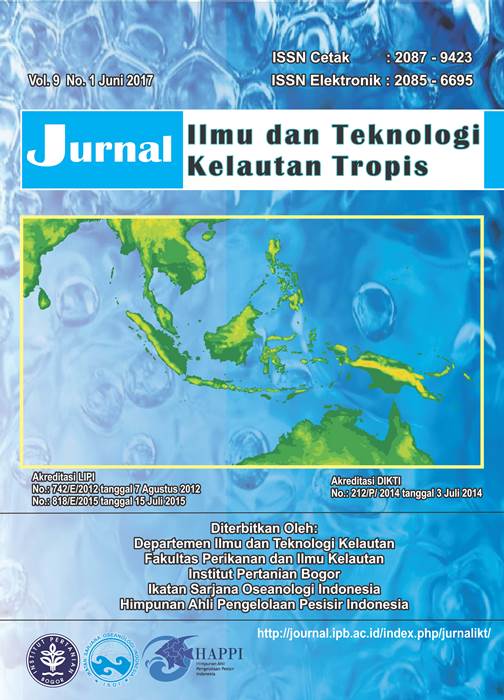Abstract
Panggang Island is one of the snorkeling and diving area in the Seribu Islands. Number of tourists increase every year in line with the improving of tourism infrastructure such as tourist boat and dive shops. Tourism activities not only provide economic benefits but also give negative impact on coral reef ecosystem. The results of direct observations showed that there was destructive impact from snorkeling and diving. The most destructive behavior done by snorkeling and diver who has license was stepping on the coral reef. While the most destructive behavior by diver who has no license was holding the coral reef. The continued effect of tourist destructive behaviour grouped into three categories such as rubble, scratches on top of coral colony, and crushed coral colony. Based on the tourism impact analysis showed that diverwho has not been licensed gived the greatest damage impact,it was 13.55% per year of the ecological potential. While the impact of snorkeling touristwas 5.05% and diver who has license gived the smallest effect, it was 2.36%. Comparison of coral reef data between 2010 and 2016 showed no significant changes to the coral reef, it means that until now coral reefs of Panggang Island still tolerate any disturbances including impact of tourism activities.
Keywords : coral reef, diving, snorkeling, tourism, Panggang Island
Panggang Island is one of the snorkeling and diving area in the Seribu Islands. Number of tourists increase every year in line with the improving of tourism infrastructure such as tourist boat and dive shops. Tourism activities not only provide economic benefits but also give negative impact on coral reef ecosystem. The results of direct observations showed that there was destructive impact from snorkeling and diving. The most destructive behavior done by snorkeling and diver who has license was stepping on the coral reef. While the most destructive behavior by diver who has no license was holding the coral reef. The continued effect of tourist destructive behaviour grouped into three categories such as rubble, scratches on top of coral colony, and crushed coral colony. Based on the tourism impact analysis showed that diverwho has not been licensed gived the greatest damage impact,it was 13.55% per year of the ecological potential. While the impact of snorkeling touristwas 5.05% and diver who has license gived the smallest effect, it was 2.36%. Comparison of coral reef data between 2010 and 2016 showed no significant changes to the coral reef, it means that until now coral reefs of Panggang Island still tolerate any disturbances including impact of tourism activities.
Keywords : coral reef, diving, snorkeling, tourism, Panggang Island
Authors
This work is licensed under a Creative Commons Attribution 4.0 International License.
Jurnal Ilmu dan Teknologi Kelautan Tropis i is an open-access journal, meaning that all content is freely available without charge to the user or their institution. Users are allowed to read, download, copy, distribute, print, search, or link to the full texts of the articles in this journal without needing to request prior permission from the publisher or the author.
All articles published by Jurnal Ilmu dan Teknologi Kelautan Tropis are licensed under the Creative Commons Attribution 4.0 International License. This allows for unrestricted use, distribution, and reproduction in any medium, provided proper credit is given to the original authors.
Authors submitting manuscripts should understand and agree that the copyright of published manuscripts is retained by the authors. Copyright encompasses the exclusive rights of authors to reproduce, distribute, and sell any part of the journal articles in all forms and media. Reproduction of any part of this journal, its storage in databases, and its transmission by any form or media is allowed without written permission from Jurnal Ilmu dan Teknologi Kelautan Tropis.


